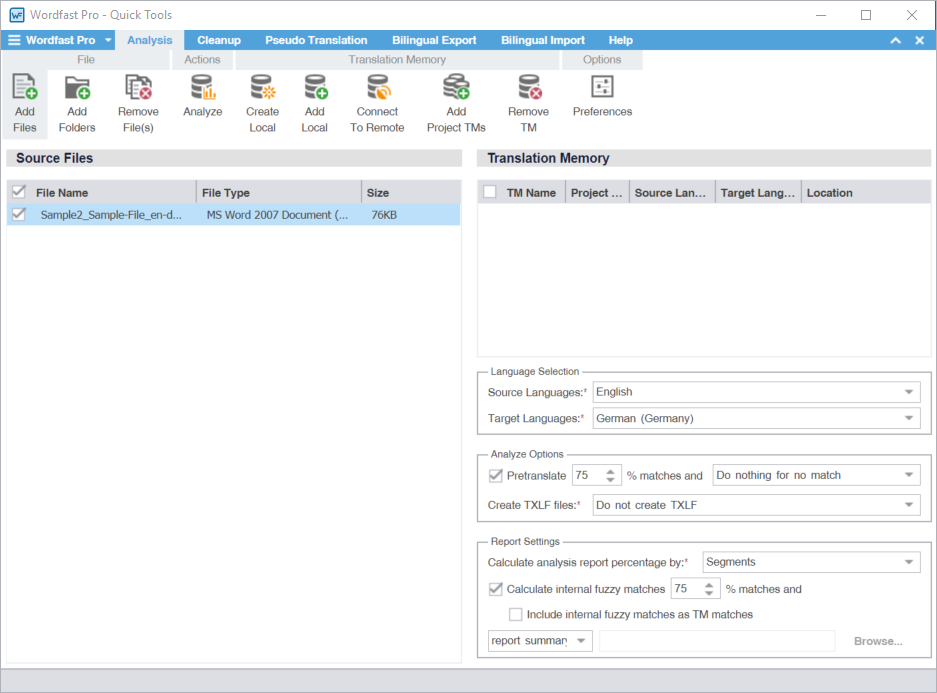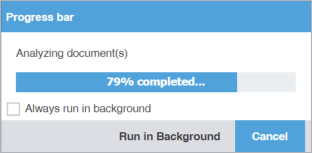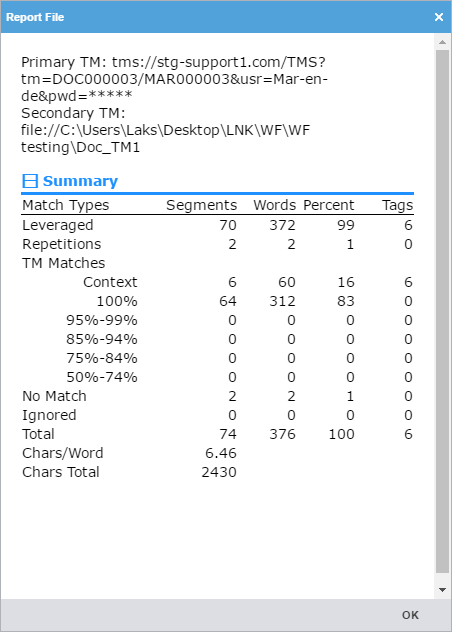You can use actions on the Analysis tab to submit files to assess potential TM matches and repetitions.
| Note: When you first open Quick Tools, the default is the Analysis tab. Once you access Quick Tools, the default Quick Tools tab is the last one you used. |
| Note: For Analyze and Cleanup actions, you can choose to run the action in the background and continue your work. This is useful when processing large numbers of files. |
To analyze files:



